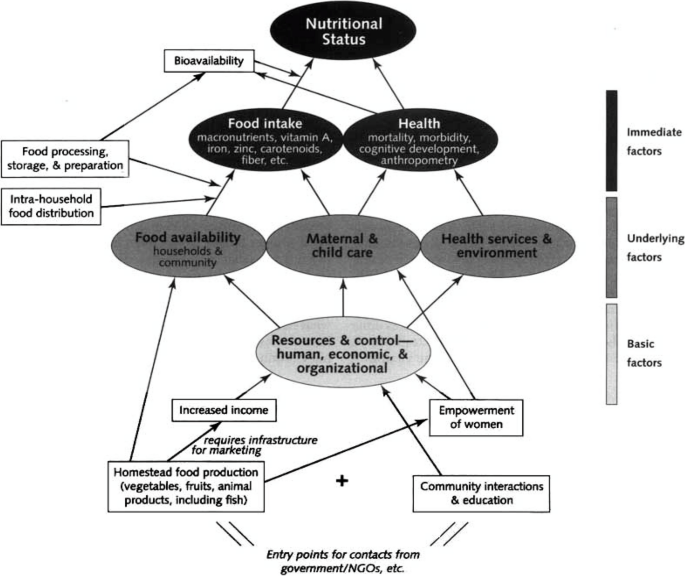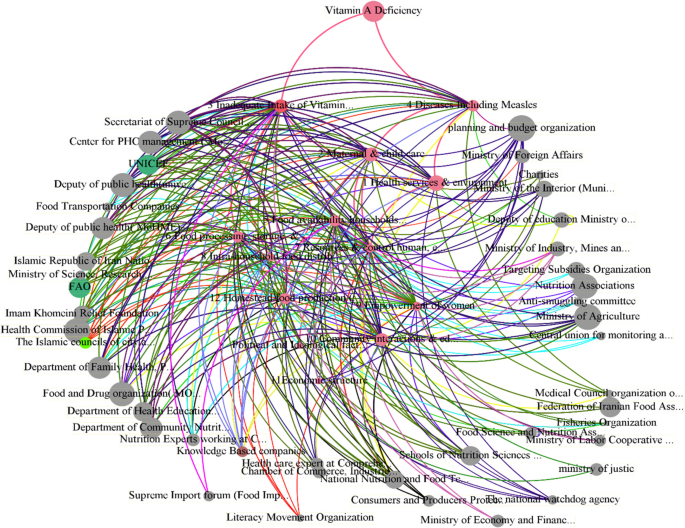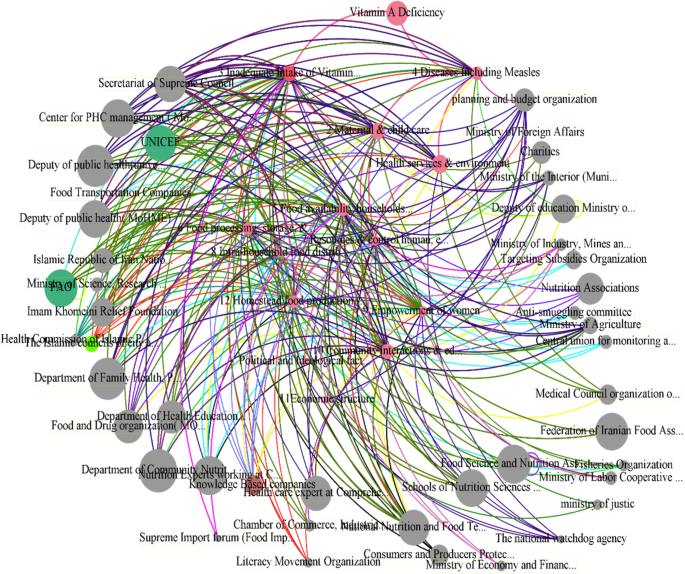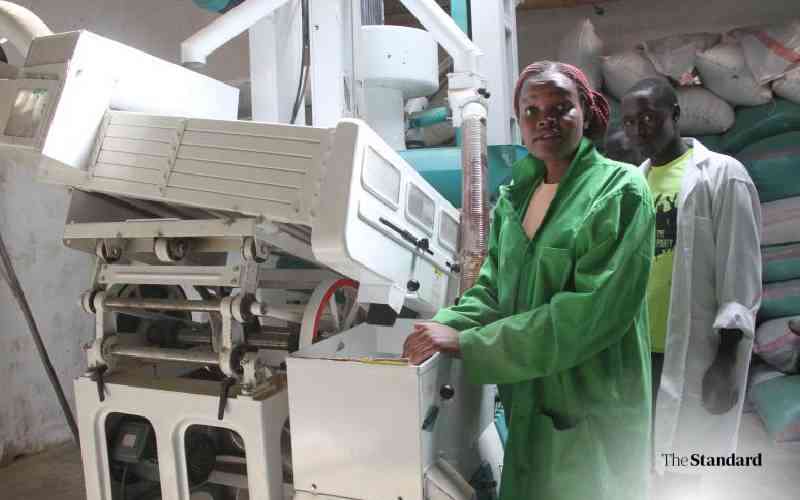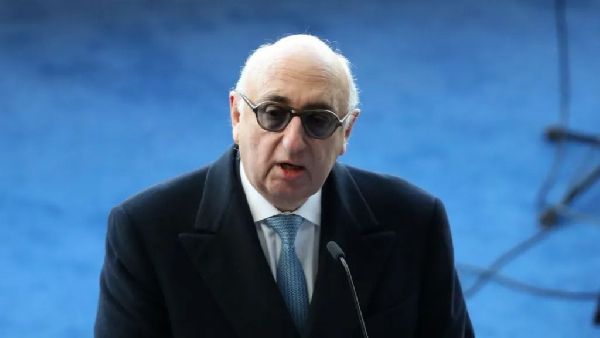BMC Nutrition volume 11, Article number: 127 (2025) Cite this article
Vitamin A deficiency remains a significant public health concern in developing countries, substantially contributing to morbidity and mortality among young children. In Iran, the prevalence of vitamin A deficiency among children aged 15 to 23 months increased during the decade from 2002 to 2012, mostly due to socio-economic reasons. Given the complexity of managing this deficiency, multiple stakeholders are involved in its prevention and treatment. The objective of this study is to identify these stakeholders and assess their interests, influence, and interconnections to enhance coordinated efforts in addressing vitamin A deficiency.
In this qualitative study, we identified primary and secondary stakeholders through interviews with experts and key informants, as well as content analysis of relevant documents. To examine the interactions between stakeholders' power, interests, and positions, we utilized Policy-Maker software (Version 4). Additionally, we employed Gephi software (Version 0.9.2) for social network analysis, mapping stakeholder relationships to enhance our understanding of their interconnected dynamics.
Our research identified 45 stakeholders, categorized as follows: 71% from the public sector, 4.5% international entities, 11.11% private organizations, and 13% from civil society groups. Additionally, 62% of stakeholders were associated with the executive domain, while 38% belonged to the education sector. Degree centrality ranged from 1 to 12, Closeness centrality scores ranged from 0.25 to 0.67, indicating moderate to high accessibility within the network. Athough the Ministry of Health and Medical Education was identified as the most influential stakeholder, and also it plays a key role in collaboration with other stakeholders, multiple stakeholders, including NGOs, universities, and international organizations such as UNICEF and FAO, also played significant roles in reducing Vitamin A deficiency. Network analysis metrics—including degree, closeness, betweenness, and eigenvector centralities—indicated that the highest degree value was attributed to the Secretariat of the Supreme Council for Health and Food Security (affiliated with the Ministry of Health and Medical Education), UNICEF, FAO, and the Deputy of Public Health within universities of medical sciences.
Addressing vitamin A deficiency among children aged 15–24 months in Iran requires a coordinated and strategic approach, with the Ministry of Health and Medical Education serving as the key stakeholder. While the ministry plays a central role in legislative efforts and collaboration, the relatively low to medium level of interest among other key stakeholders highlights the need for proactive engagement. Strengthening awareness through targeted advocacy, continuous negotiations, and deliberate outreach can enhance stakeholder involvement and ensure effective policy implementation. By fostering stronger partnerships and promoting informed decision-making, a more sustainable and impactful approach to reducing vitamin A deficiency can be achieved.
Research on health systems increasingly emphasizes the importance of collaborative governance across multiple sectors to achieve fairness and address economic factors affecting health [1]. The Sustainable Development Goals provide a crucial global framework for cross-sectoral collaboration [2]. For instance addressing Vitamin A deficiency (VAD) in Iranian children aged 15–23 months requires coordinated efforts across multiple sectors; legislative bodies shape food security policies, while MOHME oversees health initiatives and strategic planning, international organizations provide technical support, universities train nutrition experts, and health centers facilitate education and supplement distribution, Media raises awareness, relief foundations aid vulnerable groups, and agricultural and regulatory bodies ensure access to Vitamin A-rich foods and supplements [3, 4].
However, multisectoral collaborations are complex, dynamic, and prone to conflicts, requiring coordination, relationship management, and goal alignment [1]. Stakeholder analysis is a key component of the Health Impact Assessment, which is informing decision-makers about the consequences of their actions to increase multisectoral collaboration [5].
The relationship between nutrition and the health-economic implications of VAD is critical at both the individual and societal levels [6]. Cost–benefit analyses have shown that interventions to reduce VAD (supplementation, fortification, and education) have significantly higher benefits than costs [7]. Vitamin A supplementation is a highly cost-effective intervention for children's health, particularly in economic instability and limited dietary sources [8, 9]. Despite high-dose vitamin A supplementation, progress in reducing the prevalence of VAD in developing countries remains modest [10]. The prevalence of vitamin A insufficiency in children is substantially higher than the prevalence of clinical VAD symptoms [11]. Iran's prevalence of VAD among children aged 15 to 23 months increased from 0.5% to 18.3% [10, 12, 13]. Several interrelated factors contributed to this alarming increase, including economic instability and sanctions during this period led to reduced availability and affordability of nutrient-rich foods [14, 15], changes in dietary habits towards more processed and less nutritious foods reduced the intake of vegetables and fruits rich in provitamin A carotenoids, inadequate coverage of vitamin A supplementation programs, and limited intersectoral collaboration between health, agriculture, and education sectors [16]. However, according to UNICEF, 150 low- and middle-income countries (LMICs) provide vitamin A capsules at least once a year [1], and 19 countries employ the fortification strategy, according to the Global Alliance for Improved Nutrition (GAIN) reports [2] and limited intersectoral collaboration between health, agriculture, and education sectors.
Previous efforts to combat VAD in Iran largely relied on vertical interventions, such as isolated supplementation programs, without sufficient multisectoral engagement or a systematic mapping of stakeholder power and influence [17]. These top-down approaches often failed to achieve sustainable results, particularly in marginalized regions with complex socio-economic challenges [16].
Moreover, most earlier initiatives did not fully integrate stakeholder interest, position, and power dynamics into the policy design and implementation phases, leading to weak intersectoral collaboration and fragmented ownership among key actors [18].
By explicitly identifying high-power but low-interest stakeholders, and recommending strategies for better engagement and advocacy, this study fills a critical gap in operationalizing multisectoral governance for VAD reduction in Iran.Thus, our research not only highlights the complexity of stakeholder interrelations but also provides a foundation for more integrated, targeted, and sustainable interventions to address VAD effectively.
Addressing VAD requires the commitment, ownership, and responsibility of governments, civil society, and industry, supported by international organizations [19]. A range of interventions, such as supplemental feeding, dietary changes, fortification, and health interventions, tailored to community context, may be necessary to achieve this goal [10].
An effectively balanced network of interactions among many stakeholders can result in the formulation and execution of appropriate health-related policies. Examining this network can provide insights into the framework of the policymaking process and the connections and exchanges between various stakeholders in terms of their significance [20, 21].
Evidence suggests that effectively reducing nutrient deficiencies among children requires the involvement and support of a diverse range of stakeholders in nutrition interventions. Therefore, conducting a stakeholder analysis is essential for gaining a deeper understanding of their roles, influence, and perspectives. Such an analysis facilitates informed decision-making, allowing for the strategic engagement of stakeholders to enhance their commitment and support in future initiatives [22]. Stakeholder analysis serves as an evaluative tool aimed at assessing the influence, interest, and interconnections among stakeholders [22], and this issue remains unaddressed in Iran to date. Therefore, we decided to investigate the relevant stakeholders who have greater power among key actors in addressing VAD. This study presents targeted policy recommendations aimed at mitigating VAD among Iranian children aged 15 to 23 months, fostering more effective stakeholder engagement and coordinated action.
With the objective of exploring the different dimensions and impacts of stakeholders on VAD-related policies in Iran, we selected the recommendations and conceptual framework for vitamin A deficiency causes [1], as suggested by the World Bank and Varvasovsky et al. [23], as suitable for our study. Consequently, stakeholders were analyzed and categorized based on four criteria: interest, position, power, and type of influence.
Based on Fig. 1, which shows the determinants of VAD, our main questions were: what institutions are the main relevant stakeholders in the context of Iran, especially the two provinces of Sistan and Gilan, which have the highest prevalence of VAD? What are the policy documents related to VAD (including the principal documents'titles)?
Conceptual framework of causes of vitamin A deficiency [1]
To accurately identify the key stakeholders involved in VAD, we conducted a comprehensive process of document analysis and qualitative interviews. Initially, stakeholders were identified through documents and interviews. Subsequently, the participants'views on the roles of stakeholders were assessed using expert opinions. The group comprised 38 professionals representing a range of organizations, including the Ministry of Health, universities, NGOs, UNICEF, and municipal authorities. Participants held diverse roles, spanning from subject matter experts to department heads and deans. The majority were between 30 and 60 years old and possessed varied educational backgrounds. Key informants (Table 1) engaged in VAD-related policies and regulations were interviewed.
Snowball and purposeful sampling were used to choose the interview participants. In this study, purposive sampling was initially employed to identify participants who had substantial expertise or direct involvement in VAD-related policymaking and program implementation. This approach allowed us to strategically select individuals based on predefined eligibility criteria, such as their institutional affiliation, professional experience, and active role in nutrition policy. Interviewees with program-related experience and expertise in VAD were asked to identify other players in VAD-related policy. Saturation was formally considered achieved when tree consecutive interviews failed to produce any new categories, themes, or stakeholder perspectives related toVAD policy processes. The participants were briefed about the study's goals and handed the consent form at the start of the interview. Their characteristics are listed in Table 1.
Two authors (GR and AB) conducted the interviews. Three authors (FR, AB, and AT) analyzed the data based on the participants'opinions. Following data collection, interviews and document searches were used to compile a list of all actors and stakeholders. Every document associated with VAD prevention and treatment was reviewed (Table 2).
A specially designed questionnaire was utilized to assess stakeholders based on their level of interest, position, authority, and type of influence [24]. Interest was defined as the engagement level with a particular VAD-related policy. The position was defined as the quantity of connections or interactions with other actors involved in VAD-related policymaking. Power was defined as the extent to which the stakeholder could influence and alter a VAD-related policy. Influence was defined as the ability to utilize the power and interest of the actor in a manner that can bring about change. Each topic in the questionnaire (interest, position, power) allowed for a five-point response scale, ranging from low to high. (low, low-medium, medium, medium–high, and high). In the next step, the email included a list of all the stakeholders/actors participating in VAD-related programs and policies in Iran, and the questionnaire was delivered to the interviewees. Ultimately, the mean score of the participants was calculated for each stakeholder. Stakeholders were categorized as"high,""moderate,"or"low"based on the mean scores obtained through expert ratings on a five-point Likert scale assessing their interest and power. The thresholds were as follows; High: scores > 4, Moderate: scores between 2.6–4, and Low: scores ≤ 2.5.
In order to enhance the validity and trustworthiness of the findings, data source triangulation was conducted by comparing information derived from interviews with document reviews, including national nutrition reports, policy documents, and institutional guidelines relevant toVAD. This cross-validation ensured that stakeholder mapping was not solely reliant on self-reported data but was anchored in documentary evidence. Triangulation also helped us to mange challenges in defining and measuring the stakeholders’ interest and power.
To design a primary network of VAD determinants and stakeholders, we used a conceptual framework of VAD causes. We categorized stakeholders across three levels of VAD determinants including; immediate, underlying, and basic factors. Then stakeholders were mapped into this framework to identify gaps in influence and collaboration at each level, to guiding recommendations for enhancing stakeholder engagement and network strengthening. According to the framework, insufficient intake of vitamin A and low bioavailability of pro-vitamin A sources (vegetables and fruits) contribute to VAD in developing countries [3]. The framework has three levels of VAD causes: level 1 (immediate factors, including food intake and health); level 2 (underlying factors, including food availability, maternal and childcare, health services, and environment); and level 3 (basic factors, including resources, human and economic control, empowerment of women, homestead food production, community interactions, and education) (Fig. 1). Then stakeholders we've found throught interviews and documents analysis were attributed to different boxes of this framework.
To conduct Social Network Analysis (SNA), the average scores were calculated using the opinions of the participants and the connections between each node or actor and all others (Table 4). Gephi Version 0.9.2 software was used to visualize and analyze the data. Analyses included degree, in-degree, out-degree, weighted out-degree, closeness centrality, betweenness centrality, and eigenvector centrality.
After reviewing documents and interviews, 45 stakeholders were identified as effective in reducing the prevalence of VAD among children aged 15–23 months in Iran (Table 3). There are three levels of actors to control VAD: national, regional, and local actors for the Vitamin A Deficiency Control Program. Each actor can be crucial in human resources, financial support, legislation, policymaking, Executive, training, treatment, consultation, and supervision. Thirty-two stakeholders (71%) were public, two stakeholders (4.5%) were international, five stakeholders (11.11%) were private, and six stakeholders (13%) are members of civil society.
The stakeholder analysis revealed that government agencies, NGOs, and healthcare providers are the most influential stakeholders in VAD reduction efforts. Government agencies play a regulatory role, NGOs are pivotal in advocacy, and healthcare providers are key in operational implementation.
The MoHME, MUs, Ministry of Agriculture, FAO, and UNICEF were the stakeholders with the highest level of interest in Iranian policies relating to VADs out of all recognized parties. Some of the most critical stakeholders who have moderate and low interest, respectively, are the Health Commission of the Islamic Parliament, the Supreme Council for Science and Technology Research, the Ministry of Industry, Mines and Trade, and the Ministry of Labor Cooperative and Social Welfare, the Ministry of Science, Research and Technology, Targeting Subsidies Organization.
Stakeholders are interested in reducing the prevalence of VAD in various fields; for example, The Ministry of Health, one of the primary beneficiaries, plays a role in various decision-making, implementation, and evaluation fields. FAO The Ministry of Health, one of the primary beneficiaries, plays a role in decision-making, implementation, and evaluation. UNICEF's duties in this field include Increasing children's health and reducing the prevalence of micronutrients, especially in deprived areas. Importing Mega Doze Vitamin A Supplements, donations to the projects associated with micronutrient deficiency, and supporting the training of health personnel and communities or Ministry of Labor Cooperative and Social Welfare active in these fields: Increasing the level of community welfare.
Although MOHME as an overarching institution had high interest overall (mean interest score 4.3/5), but this interest does not distributed equally in all bodies within MOHME, e.g., Deputy of Education had comparatively moderate interest (mean interest score 3.2/5).
Government agencies and healthcare providers exhibited high power in influencing VAD-related policies and practices. NGOs, though less powerful, played a crucial role in raising awareness and mobilizing community support (Fig. 3).
Among the stakeholders who have the most power are the Health Commission of the Islamic Parliament, MOHE, Ministry of Economy and Finance, Ministry of the Interior (Municipalities, governorate), and Nutrition Experts working at Comprehensive Community Health Centers, Schools of Nutrition Sciences and Dietetics(universities of Medical Sciences), Ministry of Industry, Mines and Trade and Supreme Council for Science and Technology Research, Ministry of Agriculture They have moderate and low power, respectively.
According to the results, the MOHME has the most significant direct influence on related policies (Figs. 2 and 3). In contrast, the other stakeholders have varying degrees of support, influence, and power. Some of MOHME deputies, such as the Deputy of Education or the Food and Drug Organization, have low interest despite their high power. Physicians are more clinically oriented on the treatment of VAD but not prevention. The high support position and power of Nutrition Associations in the civil society sector also demonstrate the profound influence of nutritionists on this subject in the national and local areas.
The findings show that most stakeholders (62% and 38%) are related to executive and education matters, respectively. The statuses of each actor in Position, power interest, and Type of influence are measured separately in Table 3.
The stakeholders is categorized into 14 distinct roles: financial support (FAO), research (Deputy of Public Health and universities), consultation (UNICEF), execution (Deputy of Public Health), training (Center for PHC Management), legislation (Health Commission of the Islamic Parliament), coordination (Islamic Councils of City and Village), supervision (General Inspection Office), assistance (Imam Khomeini Relief Foundation), public awareness (Islamic Republic of Iran National Broadcasting—IRIB), provision of resources (Imam Khomeini Relief Foundation), promotion (healthcare experts at Comprehensive Community Health Centers), advocacy (Department of Community Nutrition Improvement—MOHME), policymaking (Department of Family Health, Population, and Schools—MOHME), and regulatory oversight (Food and Drug Organization—MOHME). It is important to note that these stakeholders exert influence across various aspects of the initiative.
The MOHME has been recognized as the most crucial stakeholder regarding its position and support for all the activities to reduce VAD. None of the stakeholders in the private sector have high support or power over related policies. Also, the Ministry of Economy and Finance (Customs) and the Ministry of the Interior (Municipalities), Targeting Subsidies Organization, had high power but low interest.
The SNA indicated a well-connected network with government agencies and healthcare providers at the core. These stakeholders exhibited high centrality, indicating their crucial role in the network. Tables 4 and Supplementary Material 1: Table 6 present the computed network metrics, which include degree, closeness, betweenness, and eigenvector centralities for the network of actors on VAD.
High centrality values—such as degree, betweenness, and eigenvector centralities—reflect a stakeholder’s strategic positioning and influence within the network. Stakeholders with high centrality (e.g., the Secretariat of the Supreme Council for Health and Food Security, UNICEF, and FAO) possess the capacity to broker collaborations, mobilize resources, and disseminate information efficiently, thereby facilitating policy changes and coordination.
Our findings indicate that macro-level interventions are required to target public policies and translate them to policy-makers for the MOHME's more meaningful intervention to enhance intersectoral legislation and policies on VAD. Our study also revealed the potential capacities of NGOs for preventing and controlling VAD, which the MOHME has not sufficiently addressed.
Regarding VAD-related policy in Iran, the identified stakeholders influence the formulation and implementation of policies. According to participants"'s viewpoints, the MoHME is the most critical stakeholder identified. Differences in opinions and standpoints regarding the creation and execution of healthcare policies can pose challenges [25]. However, negotiations can help bridge these gaps and lead to an optimal compromise [26]. Regarding VAD-related policies in Iran, a lack of cooperation has hindered the proper implementation of the plans [27]. Based on the rankings and metrics of the stakeholders, one significant finding of this study is that, although VAD has been accurately identified as a challenge for Iran's health sector and is an endemic nutritional issue in several provinces for this age group [2], many stakeholders believe they have limited ability to address it. Indeed, many stakeholders consider the disease merely as a priority of the MoHME.
Although VAD is a major determinant influencing public health policymaking, it is the distribution of stakeholder power that ultimately determines the prioritization and implementation of VAD-related policies [12]. Some stakeholders, like the Food and Drug Administration or the Deputy Minister of Education (MOHME), who have the highest power and position, do not have adequate interest in participating. This considerable challenge prevents relevant topics from being included in the agenda-setting process [28].
The stakeholders identified displayed varying levels of interest in VAD-related policy. The identified stakeholders'positions, power, interests, and influence levels are varied. Regarding position, high-ranking stakeholders like parliament may significantly affect other actors [29]. Stakeholders can influence policies based on their characteristics and their positive or adverse effects [30]. Recognizing stakeholder responsibilities and their degree of efficacy is crucial for developing effective policy solutions [5, 31]. Their differing motivation can explain this [32]. On the other hand, stakeholders rated high for a position can significantly impact other stakeholders—each stakeholder's political, economic, social, and cultural status has a vital role in the policymaking process [33].
The power of stakeholders is a key factor in the development and implementation of health-related policies [34]. However, for VAD-related policies in Iran, stakeholder participation in political discussions for policymaking is generally low, presenting challenges that can lead to delays or policy failures. Specifically, regarding VAD policy in Iran, the majority of decisions are made by the MoHME, with minimal involvement from other stakeholders and insufficient dialogue with grassroots beneficiaries. Increasing political dialogue could help mitigate these weaknesses. Additionally, due to limited financial resources and the economic crisis stemming from international sanctions, not all necessary financial resources for patient treatment are provided to every patient.
The lack of interaction with corporations has always been the main barrier to policy formulation and implementation [10]. Since Vitamin A deficiency (VAD) is not prevalent across all age groups, many stakeholders prioritize other micronutrient deficiencies instead [12], s observed in many developing countries, certain political actors with financial resources and infrastructure focus on implementing short-term policies to achieve their immediate objectives [35]. Collaboration and interaction among stakeholders at all levels should be widely embraced to tackle critical issues like VAD. Stakeholders need to fully comprehend the significance and impact of their cooperation. Cultural factors and community opinions can influence health policies [36], and should have more active involvement and a pivotal role in preventive policies; the importance of stakeholders such as social media, news websites, and the IRIB underscores this issue. It is essential to recognize that even local nongovernmental organizations (NGOs) with limited funding and no medical expertise can successfully encourage and facilitate community involvement in the administration of health centers. Such functions of local NGOs should be further acknowledged and promoted, as they are crucial for a sustainable healthcare system [37].
The results of the present study also confirmed that the MOHME should be in charge of formulating policies and making decisions regarding reducing VAD in this age group, with support and lobbying from other relevant stakeholders. Negotiations may thus be a crucial tactic to reduce the present disparity among stakeholders and facilitate moving towards optimal compromises, enhancing the likelihood that this subject will be on the agenda [6, 11].
According to the available evidence, a hybrid approach, including top-down and bottom-up approaches, must be considered to facilitate policy implementation [38]. Experts suggest that to enhance policy and its implementation, both top-down and bottom-up approaches should be employed continuously. Nevertheless, the top-down approach is more commonly applied in Iran's healthcare system [10].
Consequently, this policy, which requires a long-term perspective, faces challenges. Within the MOHME, the Department of Family Health, Population, and Schools and the Department of Community Nutrition Improvement play a critical role in all stages of this policy. Through cooperation with the Secretariat of the Supreme Council for Health and Food Security, they can increase the support of high-powered actors for this policy through advocacy. For instance, increasing the support of stakeholders, such as.
MOHME can also increase the power and participation of actors such as the National Nutrition and Food Technology Research Institute in providing new evidence for policymaking and providing solutions to improve community nutrition; nutritionists who play an essential role in policy implementation; and nongovernmental organizations (NGOs) in financial fields, agenda-setting, or implementation. Finally while targeted disease-specific policies like VAD interventions are feasible and have precedents (e.g., Vitamin A supplementation programs in Bangladesh and Uganda), broader integrated nutrition strategies are typically more sustainable and impactful [38].
The findings of this study showed that the MOHME is the most essential stakeholder in reducing VAD in children between the age of 15–23 months in Iran. In addition to legislating, it also has the role of coordinating other stakeholders. Since some powerful and influential stakeholders had a low or medium interest in participating in the policy processes, using careful and practical strategies, ongoing negotiations, receiving advocacy, and promoting awareness among senior managers and policy-makers can be helpful. In addition, increasing the interaction and collaboration among stakeholders, especially nutritionists or NGOs, should be considered in policymaking processes. Strengthening multisectoral governance, enhancing stakeholder dialogue, and formalizing MOHME leadership roles are crucial steps for sustaining VAD prevention efforts in Iran. These results underline the need for structured stakeholder engagement plans and enhanced political advocacy for micronutrient interventions.
The datasets analyzed during the current study are available from the corresponding author upon a reasonable request.
- VAD:
-
Vitamin A deficiency
- MoHME:
-
Ministry of Health and Medical Education
- UNICEF:
-
United Nations International Children's Emergency Fund
- FAO:
-
Food and Agriculture Organization
- DALYs:
-
Disability-adjusted life years
- NGO:
-
Nongovernmental Organizations
- CBA:
-
Cost–Benefit Analysis
- GAIN:
-
Global Alliance for Improved Nutrition
The authors would like to thank the'MoHME's authorities and staff.
This Research is part of a Ph.D. thesis on Food Policy at the Faculty of Nutrition Sciences and Food Technology, Shahid Beheshti University of Medical Sciences (SBUMS). It has not benefited from the university's financial support.
The Declaration of Helsinki guidelines carried out all methods of the present study. The ethics committee of Shahid Beheshti University of Medical Sciences ethically approved this project. Written informed consent was obtained from interviewees before each interview.
Not applicable.
The authors declare no competing interests.
Springer Nature remains neutral with regard to jurisdictional claims in published maps and institutional affiliations.
Open Access This article is licensed under a Creative Commons Attribution-NonCommercial-NoDerivatives 4.0 International License, which permits any non-commercial use, sharing, distribution and reproduction in any medium or format, as long as you give appropriate credit to the original author(s) and the source, provide a link to the Creative Commons licence, and indicate if you modified the licensed material. You do not have permission under this licence to share adapted material derived from this article or parts of it. The images or other third party material in this article are included in the article’s Creative Commons licence, unless indicated otherwise in a credit line to the material. If material is not included in the article’s Creative Commons licence and your intended use is not permitted by statutory regulation or exceeds the permitted use, you will need to obtain permission directly from the copyright holder. To view a copy of this licence, visit http://creativecommons.org/licenses/by-nc-nd/4.0/.
Rajaeieh, G., Bakhtiari, A., Gholami, M. et al. Stakeholders influence to reduce vitamin A deficiency in children aged 15 to 23 months in Iran: an analysis of stakeholders and networking. BMC Nutr 11, 127 (2025). https://doi.org/10.1186/s40795-025-01098-y
Received:
Accepted:
Published:
DOI: https://doi.org/10.1186/s40795-025-01098-y
